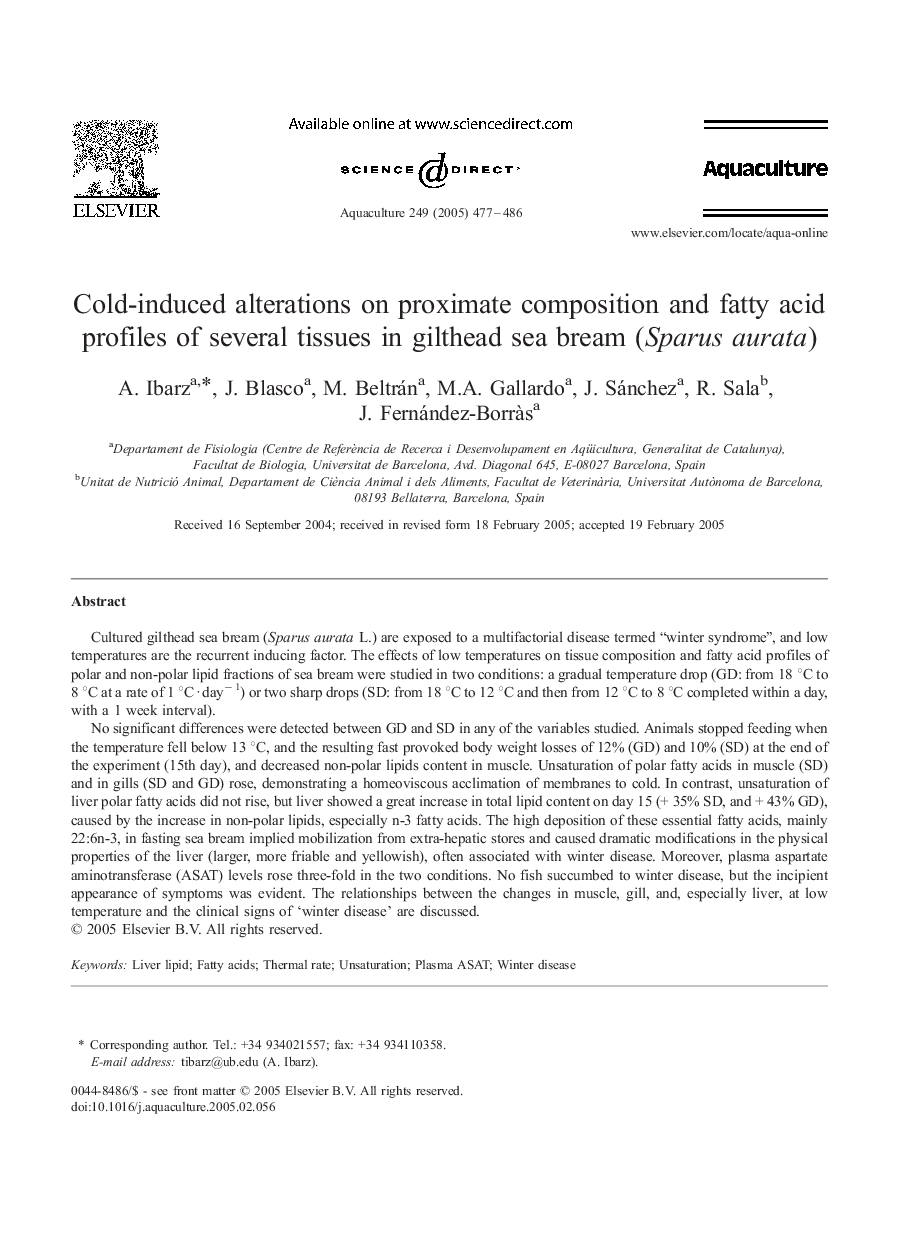| Article ID | Journal | Published Year | Pages | File Type |
|---|---|---|---|---|
| 8974713 | Aquaculture | 2005 | 10 Pages |
Abstract
No significant differences were detected between GD and SD in any of the variables studied. Animals stopped feeding when the temperature fell below 13 °C, and the resulting fast provoked body weight losses of 12% (GD) and 10% (SD) at the end of the experiment (15th day), and decreased non-polar lipids content in muscle. Unsaturation of polar fatty acids in muscle (SD) and in gills (SD and GD) rose, demonstrating a homeoviscous acclimation of membranes to cold. In contrast, unsaturation of liver polar fatty acids did not rise, but liver showed a great increase in total lipid content on day 15 (+ 35% SD, and + 43% GD), caused by the increase in non-polar lipids, especially n-3 fatty acids. The high deposition of these essential fatty acids, mainly 22:6n-3, in fasting sea bream implied mobilization from extra-hepatic stores and caused dramatic modifications in the physical properties of the liver (larger, more friable and yellowish), often associated with winter disease. Moreover, plasma aspartate aminotransferase (ASAT) levels rose three-fold in the two conditions. No fish succumbed to winter disease, but the incipient appearance of symptoms was evident. The relationships between the changes in muscle, gill, and, especially liver, at low temperature and the clinical signs of 'winter disease' are discussed.
Keywords
Related Topics
Life Sciences
Agricultural and Biological Sciences
Aquatic Science
Authors
A. Ibarz, J. Blasco, M. Beltrán, M.A. Gallardo, J. Sánchez, R. Sala, J. Fernández-Borrà s,
